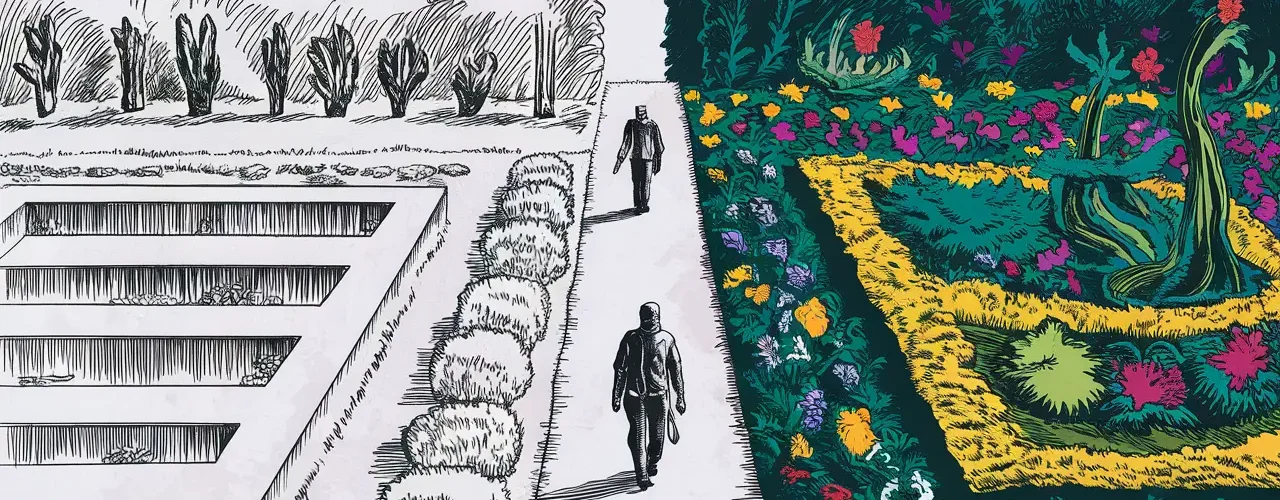
Introduction to Hedonism Philosophy and Stoic Practices: Building a Foundation
Welcome to an exhilarating exploration of two ancient philosophies that offer profound insights into the art of living well—Hedonism and Stoicism. While these philosophies may seem at odds with each other, with hedonism often associated with the pursuit of pleasure and stoicism recognized for its emphasis on resilience and virtue, they both provide valuable tools for navigating the complexities of modern life. This introduction will lay the groundwork by defining each philosophy and highlighting their potential to work together to enhance personal well-being.
Hedonism, historically attributed to figures like Epicurus, argues that pleasure is the highest good and the ultimate aim of life. However, contrary to popular belief, hedonism doesn’t advocate for rampant indulgence. Instead, it suggests a calculated approach to pleasure, emphasizing long-term happiness over transient delights. On the other hand, Stoicism, founded by Zeno of Citium, teaches the development of self-control and rationality to overcome destructive emotions. It champions living in harmony with reason and accepting what we cannot change.
By integrating the joy-seeking wisdom of hedonism with the resilience-building strategies of stoicism, individuals can forge a balanced approach to life that not only increases emotional intelligence but also enhances overall happiness. This synthesis can create a robust philosophical framework that is particularly relevant in our fast-paced, often stressful modern world.
Daily Pleasures: How Hedonism Philosophy Enhances Everyday Life
In the hustle and bustle of our daily lives, it’s easy to overlook the small joys that can brighten our days. This is where Hedonism Philosophy swoops in, offering a refreshing perspective on how to enhance our everyday life. Embracing Hedonism Philosophy means recognizing and valuing the daily pleasures that can bring immense happiness and satisfaction, no matter how small or fleeting they might seem. For instance, savoring a delicious cup of coffee in the morning, taking a moment to enjoy the sunset, or indulging in a warm, relaxing bath after a long day. These aren’t just trivial niceties; they’re significant moments that, when appreciated, can transform our overall mood and outlook on life.
Hedonism Philosophy teaches us to seek and appreciate these moments, arguing that pleasure is an essential part of a well-lived life. It’s not about being irresponsible or indulgent but about integrating genuine pleasure into our lives in a balanced way. This approach doesn’t just make the day-to-day more enjoyable; it also has tangible benefits, like reducing stress and increasing overall life satisfaction. Imagine finishing a grueling workday but having that special dinner or movie night to look forward to—it shifts your entire mindset from enduring to enjoying.
So, by adopting Hedonism Philosophy in daily life, you’re not just living; you’re delighting in living. It’s about giving yourself permission to enjoy life’s pleasures without guilt, acknowledging that these moments of joy are not just luxuries, but necessities for a happy and fulfilling life.

Stoic Strength: Cultivating Resilience with Stoic Practices
While Hedonism Philosophy often grabs the spotlight for advocating the pursuit of pleasure, let’s pivot to its philosophical cousin, Stoicism, which offers a different yet complementary path to personal fulfillment. Stoicism teaches us about cultivating resilience and emotional strength by embracing rationality and self-control. Imagine you’re facing a stressful situation at work; instead of getting swept up by frustration or anxiety, Stoic practices encourage you to focus on what you can control—your response and your actions.
This philosophy isn’t about suppressing emotions; it’s about managing them in a healthy, proactive way. It helps you build a kind of mental fortitude that shields you from the chaos of external circumstances. Consider the Stoic practice of daily reflection—it’s like mental strength training. By taking a few moments each day to reflect on your actions and decisions, you develop a deeper sense of awareness and a greater capacity to handle life’s ups and downs.
Integrating Stoic practices into your life doesn’t mean abandoning the pleasures celebrated by Hedonism Philosophy. In fact, the two can coexist beautifully. Stoicism equips you with the tools to not get overwhelmed by hardships, which in turn, frees you up to enjoy life’s pleasures more fully. Think of it as being calm in the eye of the storm, where you are less perturbed by the wind and more able to enjoy the view. So, by embracing Stoicism, you’re not just surviving life’s battles; you’re thriving amidst them, ready to enjoy the good with a steady heart and a clear mind.
Merging Paths: Practical Ways Hedonism Philosophy Complements Stoic Strategies
At first glance, Hedonism Philosophy and Stoicism might seem like odd bedfellows—one celebrates indulgence in pleasure, while the other preaches the virtue of restraint. However, when these paths merge, they create a powerful framework for living a fulfilling life. Imagine using Stoic strategies to maintain your calm and resilience, while also embracing the joys of Hedonism Philosophy—it’s like having your cake and eating it too, but mindfully.
Here’s how these philosophies complement each other: Hedonism Philosophy teaches us to appreciate and seek pleasure in everyday moments. Whether it’s enjoying a fine meal, relishing a quiet morning, or savoring time with loved ones, hedonism finds value in these experiences. On the other hand, Stoicism provides a sturdy emotional foundation, enabling us to enjoy these pleasures without becoming dependent on them. It teaches us to appreciate what we have, without fearing loss.
Practically, this combination means living with balance. You might plan a luxurious vacation because you know life is short (a nod to hedonism), but also keep a budget and have a backup plan (a bow to stoicism). You learn to enjoy life’s pleasures without attachment, handling life’s inevitable ups and downs with grace and poise.
By integrating both Hedonism Philosophy and Stoic principles, you’re not just surviving; you’re thriving. You allow yourself to fully engage with the joys of life, backed by a resilience that ensures these joys don’t control or define you. It’s about enjoying the ride while also being equipped to navigate any bumps along the way.

Case Studies: Successful Integration of Hedonism and Stoicism in Modern Lives
Ever wonder how to mix a little Hedonism Philosophy with Stoicism for a balanced modern life? Let’s dive into some real-life case studies. Take Lucy, a tech entrepreneur who loves the fine things in life—gourmet food, designer clothes, you name it. While she fully embraces Hedonism Philosophy by indulging in her passions, she also practices Stoic principles to maintain a balanced budget and keep her business thriving. By setting clear boundaries on her spending and focusing on what she can control, Lucy enjoys her luxuries without letting them derail her financial stability.
Then there’s Dan, a freelance writer who applies a blend of Hedonism Philosophy and Stoicism to manage his work-life balance. He relishes the freedom to set his own schedule (hello, midday surf sessions!) and makes the most of his flexible lifestyle. However, he uses Stoic strategies to stay disciplined, ensuring he meets his deadlines and maintains a steady income, even when the waves are calling.
These stories illustrate that combining Hedonism Philosophy with Stoicism isn’t just practical; it’s transformative. By allowing for pleasure and enjoyment while staying grounded in practicality and resilience, individuals like Lucy and Dan lead rich, fulfilling lives. They prove that you can enjoy the present moment and indulge in life’s pleasures while also being prepared for its challenges. This balanced approach not only enhances personal satisfaction but also promotes a sustainable, enjoyable lifestyle.
Conclusion
Our exploration of Stoicism and Hedonism reveals a surprising truth: these seemingly opposing philosophies can, in fact, complement and enhance one another in our daily lives. Stoicism provides the bedrock of resilience and inner strength, teaching us to weather life’s storms with grace and acceptance. Hedonism, on the other hand, reminds us to seek joy and pleasure, ensuring our journey is not solely one of endurance, but also of enjoyment.
By integrating both schools of thought, we discover a path towards balance. We learn to navigate challenges with Stoic wisdom, while actively seeking moments of happiness and fulfillment. This balance allows us to appreciate the simple pleasures, cultivate gratitude for what we have, and approach life with both resilience and enthusiasm.
The key to a fulfilling life lies in finding your own unique equilibrium between Stoic discipline and Hedonistic joy. Start by incorporating small practices into your daily routine – a Stoic meditation in the morning, followed by savoring a delicious meal, or perhaps a challenging workout paired with an evening spent enjoying good company. Experiment, explore, and discover the balance that empowers you to live a life of meaning, purpose, and joy.
Hedonism & Stoicism: Finding Your Sweet Spot – FAQs
1. Wait, Stoicism and Hedonism? Aren’t those like total opposites? How can they work together?
It might seem that way at first glance! Stoicism is all about inner strength and resilience, while Hedonism emphasizes pleasure and enjoyment. But think about it – having a solid Stoic foundation helps you navigate challenges, making you better able to appreciate the good times. It’s like building a strong base for your pleasure palace!
2. So, am I supposed to become some emotionless robot who only enjoys things occasionally?
Definitely not! The beauty of combining these philosophies is that you get the best of both worlds. Stoicism helps you manage difficult emotions, while Hedonism encourages you to actively seek joy. It’s about finding the sweet spot between emotional control and embracing life’s pleasures.
3. How can I actually incorporate Stoic practices into my daily life as a Hedonist?
Start small! Try incorporating a Stoic meditation practice into your morning routine. This can help you focus on the present moment and cultivate gratitude for the good things in your life, setting a positive tone for the day. You can also use Stoic principles to handle stressful situations, allowing you to return to enjoying life’s pleasures more quickly.
4. Does this mean I have to give up some of my pleasures to be more Stoic?
Not necessarily! It’s about being mindful and intentional with your pursuit of pleasure. Stoicism can help you avoid impulsive decisions that might lead to negative consequences down the line. This means you can enjoy your pleasures without guilt or worry, enhancing the overall experience.
5. Okay, I’m intrigued. Any tips for finding the right balance between these two philosophies?
Experiment and find what works best for you! Some days you might need a bigger dose of Stoicism to handle challenges, while other days you can lean into Hedonism and indulge in life’s pleasures. Pay attention to your needs and adjust your approach accordingly. Remember, it’s a journey, not a destination!







